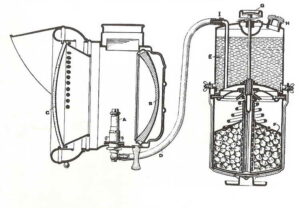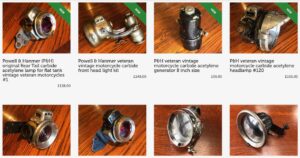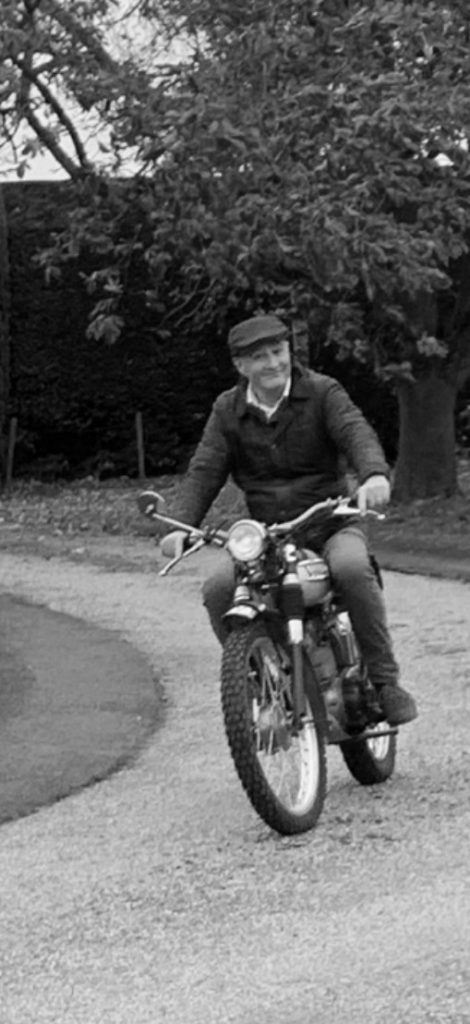Powell & Hanmer P&H carbide acetylene gas lamps for veteran vintage motorcycles & cycles.
A little history of Powell & Hanmer.
Francis Powell and Francis Hanmer founded Powell and Hanmer Ltd in 1885 for the production of bicycle and carriage lamps. Their first advertisements began to appear in November 1885.
In 1890 they lodged a Patent application for “velocipede” lamps to be used by lightweight wheeled vehicles propelled by a rider, such as a bike, tricycle and railroad handcar.
In April of 1913, they were selling headlamps for cars and in 1914 P&H (as their brand became) built their second factory manufacturing dynamo lighting sets in Rocky Lane Birmingham. They also produced dynamos for motor cars.
They went on to become one of the main sources of carbide lamps lit by acetylene gas. The main rivals were Lucas and Miller. Many other brands, such as Luxor, were in competition with them. The boom in cycle and motorcycle purchases meant that accessories, like full lighting kits, were in great demand.
Sale of Powell & Hanmer P&H carbide acetylene gas lamps for veteran vintage motorcycles & cycles.
In 1929, Powell and Hanmer Ltd, was acquired by the Lucas Company At that time, Lucas was the main competitor for the manufacture of non-electrical equipment for cycles and motorcycles.
When a director of Powell and Hanmer joined the board of Austin motor cars, Lucas feared that they would lose Austin Cars as a client. As a result, Lucas made an offer to Powell & Hanmer and purchased the business for £500,000. A fairly large sum in 1929. That is the equivalent of just under £40 million today.
Use of carbide lighting
Carbide lighting was used whenever electricity was not possible or practical. It was a simple, transportable, form of lighting. It was ideal for horse carriage lamps, cycles, motor cars and motorcycles of the late-Victorian and Edwardian era.
It has to be said that the light projection is very poor when compared to modern standards. Today, most people add carbide lamps as accessories to their vintage, veteran, antique motorcycles today as accessories. They have no intention of using them to get around. Acetylene lamps were also used on riverboats for night navigation.
Acetylene gas enabled early automobiles to drive safely at night. Thick concave mirrors combined with magnifying lenses projected the acetylene flame light. These type of lights were used until reliable batteries and dynamos became available, and manufacturers switched to electric lights.
Powell & Hanmer P&H carbide acetylene gas lamps. How they work.

a) Burner. (b) Lens Mirror. (c) Front Lens. (d) Rubber piping. (e) Water Compartment (f) Carbide Compartment (g) Needle Valve Adjuster. (h) Water Filler Cap. (i) Gas Outlet Pipe.
Acetylene gas is lit inside a lamp. The reflection of the flame produces a beam of light.
To produce the acetylene gas, you use a “gas generator”. It is essentially two chambers. Carbide pieces go in the bottom chamber and water goes in the upper chamber. Water drips down onto the carbide and produces acetylene gas. The gas is piped to the lamp with a regulated wick.
There were various ways of regulating the production of gas and the brightness of the flame. While carbide acetylene lamps were light and inexpensive to run, they were prone to gas leaks and explosions.
View a selection of front, rear and sidecar carbide lamps
 View Powell & Hanmer P&H carbide acetylene gas lamps for veteran vintage motorcycles & cycles for sale.
View Powell & Hanmer P&H carbide acetylene gas lamps for veteran vintage motorcycles & cycles for sale.
Or view my current selection of all early carbide lamps together with electrical motorcycle lights.
I usually have a few available.If you don’t see what you need, send me a message here.
